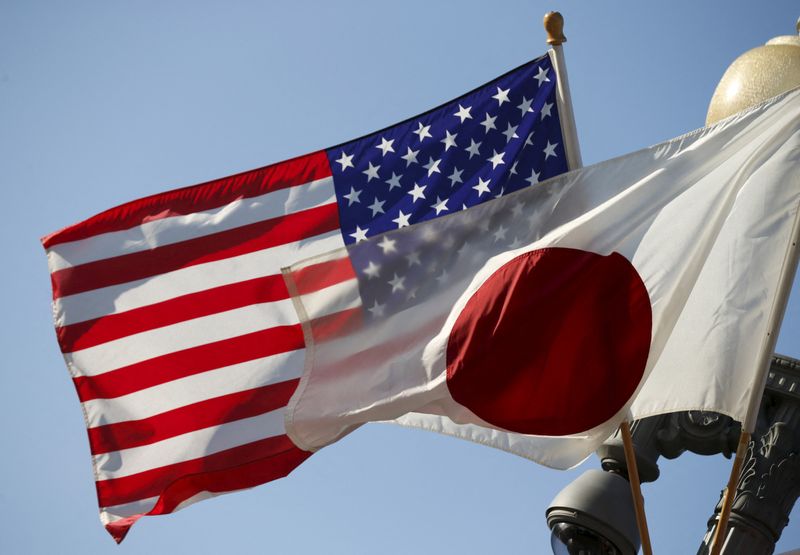
FILE PHOTO: The U.S. and Japan flags fly together outside the White House in Washington April 27, 2015. REUTERS/Kevin Lamarque
January 7, 2022
By David Brunnstrom and Ju-min Park
WASHINGTON/TOKYO (Reuters) -The United States and Japan will sign a new defense collaboration deal to counter emerging defense threats, including hypersonics and space-based capabilities, U.S. Secretary of State Antony Blinken said on Thursday.
Foreign and defense ministers of the United States and Japan met virtually to discuss stepping up security ties amid a focus on Japan’s role as tensions rise over Taiwan and North Korean missile threats continue.
Blinken said the U.S.- Japan alliance “must not only strengthen the tools we have, but also develop new ones”, citing Russia’s military buildup against Ukraine, Beijing’s “provocative” actions over Taiwan and North Korea’s latest missile launch.
North Korea fired a “hypersonic missile https://www.reuters.com/world/asia-pacific/nkorea-says-launch-wednesday-was-hypersonic-missile-yonhap-2022-01-05” this week that successfully hit a target, its state news agency said.
Russia, China and the United States are also racing to build hypersonic weapons whose extreme speed and maneuverability make them hard to spot and block with interceptor missiles.
“We’re launching a new research and development agreement that will make it easier for our scientists, for our engineers and program managers to collaborate on emerging defense related issues, from countering hypersonic threats to advancing space based capabilities,” Blinken said at the opening of the meeting.
U.S. Defense Secretary Lloyd Austin said the meeting would help lay down a framework for the future of the security alliance, including evolving missions to “reflect Japan’s growing ability to contribute to regional peace and stability.”
As its neighboring countries are testing hypersonic missiles, Japan has been working on electromagnetic “railgun” technology to target those missiles.
Japanese Prime Minister Fumio Kishida’s government last month approved record defense spending https://www.reuters.com/world/asia-pacific/japan-plans-record-defence-spending-2022-with-10th-straight-annual-increase-2021-12-24, with a 10th straight annual increase in 2022.
Top Japanese officials have said that developing enemy base strike capabilities is an option to consider to boost defense, but some experts say such a move might hit hurdles such as a theme of pacifism in domestic politics.
Japanese Foreign Minister Yoshimasa Hayashi told his U.S. counterparts that the international community faces challenges including “unilateral corrosive attempts to change the status quo, abusive use of unfair pressure and the expanding authoritarian regimes”.
The two nations will also sign a new five-year agreement covering the continued basing of U.S. troops in Japan, Blinken said, in a deal where Japan has said it agreed to pay $9.3 billion to share the upkeep of U.S. forces in Japan over five years.
(Reporting by David Brunnstrom, Dan Whitcomb and Rami Ayyub, Ju-min Park; Editing by Richard Pullin)

